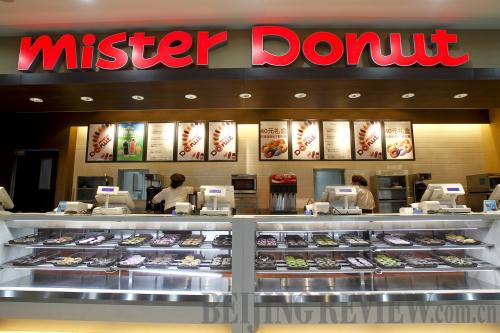|
Cheng said that in order to best serve tourists, her administration has renovated the 44 tourist information centers in all of Shanghai's 18 districts and counties, where videos and photos on display will present local tourist attractions. In these centers, receptionists can answer questions, distribute pamphlets and record tourists' complaints.
Cheng said tourists can also call a 962020 tourist hotline to ask travel-related questions around the clock, which will be answered by operators that can speak both Chinese and English. The tourism administration has also installed touch screen monitors at a number of hotels, where guests can check for information on Shanghai.
To promote Expo tours, Shanghai Municipal Tourism Administration has cooperated with financial institutions to launch an Expo-themed China Unionpay credit card in August of last year, which people can apply for at 32 different financial institutions. During the half-year gala, tickets bought with this card for eight major tourist attractions in Shanghai are entitled to a 50-percent discount. Shanghai Tourism Card holders, which have reached more than 1 million, can also receive emergency aid in case of injury, theft or missed flights during their Expo tours from the cooperating organizations of card issuers.
At a press conference on April 13, Xie Minqiang, Deputy Director of the Shanghai Food and Drug Administration, suggested that tourists to Shanghai should choose to dine at restaurants with food hygiene certificates.
Xie said that radio frequency identification technology will be used to trace and monitor all production processes of food consumed at the Expo site. Three quick-response food testing labs have also been established at the Expo site, where samples of food sold at the Expo will be continually tested.
The five medical stations at the Expo site, one in each functional zone, started operating on April 15. Each medical station is equipped with a patrol vehicle that can provide first aid to Expo visitors. The medical team on the Expo site also includes 10 ambulances, which can transfer patients to eight nearby designated hospitals.
The Shanghai Municipal Health Bureau has compiled 10 medical emergency plans for accidents such as the outbreaks of plague, heat stroke and drinking water pollution accidents during the Expo.
Going green
 |
| READY TO CATER: A cafe on the World Expo site is about to complete its preparation for opening on April 19 (CFP) |
Intended as a platform for an exchange of ideas on how to deal with urban problems such as traffic, environmental protection, energy, garbage and waste water, as well as provide models of sustainable urban development, the Shanghai Expo has made low-carbon consumption a key guiding principle for its organization from the outset of preparations.
During an interview in April, Yang Xiong, Vice Mayor of Shanghai and Deputy Director of the Executive Committee for the Expo, said that the Expo organizers had been committed to the ideas of ecological, environmentally-friendly and green urban development since the beginning of their work. He said five initiatives reflected the efforts of organizers.
First, the Expo site was previously the site of a steel factory, a source of heavy pollution, and surrounding residential communities. "After this area was selected as the Expo site, the steel works were relocated and the Expo became a catalyst for the rebirth of this area, which now has far lower carbon-dioxide emissions and an improved ecological environment," said Yang.
Second, the ecological and low-carbon concept has been taken into consideration during Expo site construction planning, including appropriate walking distances, energy conservation, ecological effects and sustainable utilization.
Third, the Expo organizers and the UN Environment Program joined hands to launch the green guidelines for the Expo. Energy conservation and green technologies have been adopted on a massive scale during the construction and operation of the Expo, including solar photovoltaic power generation, LED lighting, hydrogen-powered vehicles and electric vehicles.
Fourth, the Urban Best Practices Area on the Expo site provides a platform for displaying the best and latest energy-saving ecological buildings in different cities, which will promote the large-scale adoption of green, environmentally-friendly and energy-conserving technology in urban development in the future.
Fifth, large green area of the Expo site ensures that the area will have low carbon emissions throughout the Expo and become carbon neutral within a few years after the Expo's completion. | 